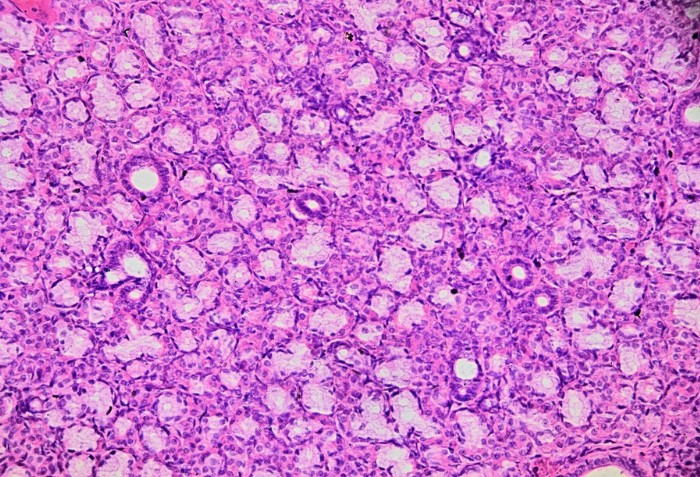Production of Salivary Gland Epithelial Progenitors and Acinar Organoids
Human iPSC-based tissue engineering system to develop salivary gland epithelial progenitors used to construct acinar organoids that mimic glandular microarchitecture and function.
Organoids are three-dimensional cell constructs that replicate the complicated tissue microarchitecture of specialized epithelial tissues. These constructs impart tissue function and allow their application to previous areas in which in vitro cells were not applicable, such as tissue engineering, drug testing and developmental biology. Here, salivary gland epithelial progenitors and acinar organoids are produced and provide a functional model for regenerative medicine and drug testing.
This University at Buffalo invention provides a novel differentiation technique that guides iPSC through the various glandular developmental stages with each progenitor lineage being induced via treatment with specific cocktails of growth factors, small molecules (agonist/inhibitors) and extracellular matrix (ECM) to mimic the developmental microenvironment necessary for the specific stage. This is also directed to the development of functional and biologically accurate acinar spheroids that express the correct mature markers in their specific cellular compartment along with the spheroids being polarized and lumenized to mimic the acinar phenotype in vivo, hence providing a platform for drug testing.
 Source: JosLuis, https://stock.adobe.com/uk/613759231, stock.adobe.com
Source: JosLuis, https://stock.adobe.com/uk/613759231, stock.adobe.com
- The ability to generate the various germ layers and progenitor phenotypes that the salivary gland develops from an easy and efficient 2-dimensional culture technique
- Avoids the use of any viral overexpression of transcription factors to define a lineage, as this technique relies on treatments with specified growth factors and chemicals for progressive development stages.
- Avoids the use of 3-dimensional cultures initially as an efficient way of generating salivary gland epithelial progenitors, and hence avoids the need of any laborious microdissection techniques or cell-sorting methods to isolate the progenitor populations.
- Generates lumenized organoids that recapture the acinar cell development with many transcription factors associated with the developing acini being expressed in different gene blocks in the various different stages of the generation technique
- Generates mature acinar organoids that express Mist1, NKCC1, Any1A and apical AQP5 along with an internal f-actin ring that show polarization of these organoids
- Generated SGEP when transplanted orthotopically survive, engraft, and differentiate into both acinar and ductal lineages, showing the bi-potency of these iPSC-derived cells
- Truly mimic the in vivo complexities of organs and their functions
- Platform for drug testing
- Platform for regenerative medicine
US Provisional Patent Application 63/544,939 filed on October 19, 2023.
Laboratory demonstration through in vitro studies and analytical chemical analysis.
Available for licensing or collaboration.
- In review for publication
Patent Information:
| App Type |
Country |
Serial No. |
Patent No. |
Patent Status |
File Date |
Issued Date |
Expire Date |
|